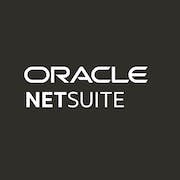Are you looking for the best revenue management software? Our comprehensive buyers guide covers everything you need to know to help you make an informed decision on how you can transform your business today.
Revenue management software has become an essential tool for maximizing profits, optimizing prices, and gaining a competitive edge. However, choosing the right one can be a daunting task. With a wide range of software options available, it's easy to get lost in a sea of features and functionalities. That's why we're here to help you navigate this complex landscape and find the perfect solution for your business needs. In this buyer's guide, we'll provide you with an in-depth analysis on revenue management technology, so you can make an informed decision and take your business to the next level.
What is revenue management software?
This is a digital solution that optimizes revenue for businesses in a variety of industries. It uses data analytics and algorithms to forecast demand, determine pricing strategies, and allocate resources efficiently. The solution helps businesses increase their profits by maximizing revenue while minimizing operational costs.
Here are some of its common use cases:
- Pricing optimization: The revenue solution analyzes market trends, customer behavior, and competitor pricing to determine the optimal pricing strategy for a product or service.
- Demand forecasting: It predicts future demand based on past data and market trends. It helps businesses allocate resources and plan for future inventory needs.
- Inventory management: It also tracks inventory levels and recommends the optimal pricing strategy to sell out inventory.
- Yield management: A revenue management platform helps businesses maximize revenue by selling products or services at the right price at the right time.
- Personalization: It collects customer data and preferences to create personalized offers and promotions. This helps businesses attract and retain customers.
Revenue management technology is widely used by both large enterprises and small businesses in the travel and hospitality industry. It is particularly useful for companies with high volume transactions and complex operations such as companies that need to manage a high volume of bookings and inventory.
Examples of industries that use it include:
- Airlines and online travel agencies (OTAs)
- Hotels and resorts. Statistics have shown that companies in the hotel industry that use revenue management systems save between 20 - 40 hours per month by streamlining manual workflows.
- Car rental companies
- Retailers
- Telecommunications companies
What are the benefits of investing in a revenue management solution?
With the growing complexity of the market and constantly changing consumer behavior, it is essential for businesses to be able to manage their revenue in a more efficient and effective way. Here are some benefits of revenue management software:
1. Increased revenue: A revenue tool helps businesses optimize pricing and inventory decisions to ensure maximum revenue. It does this by analyzing customer behavior, market trends, and historical data to provide critical insights that can help companies make informed decisions.
2. Improved efficiency: It automates many of the time-consuming tasks that would otherwise be handled manually. This helps businesses to save time, reduce errors, and improve efficiency.
3. Competitive advantage: The software provides businesses with a competitive advantage by helping them stay ahead of the competition. By making informed pricing and inventory decisions, companies can attract more customers, increase their market share, and improve profitability.
4. Increased customer satisfaction: With revenue management technology, businesses can offer competitive pricing and improve inventory availability. This helps to enhance customer satisfaction, increase loyalty, and improve their overall experience.
5. Real-time data and insights: This revenue management solution provides businesses with real-time data and insights, giving them the ability to make informed decisions quickly. Companies can adjust pricing and inventory levels in real-time based on market trends and customer behavior.
6. Improved forecasting: It helps businesses to forecast demand and sales accurately. This helps them optimize inventory levels, reduce waste, and prevent stock shortages.
10 key features of revenue management software
Revenue management technology offers several key functions and blow are 10 common one to look out for:
1. Price optimization: One of the primary functions of a revenue management program is to offer effective price optimization tools. This feature helps users to optimize pricing strategies based on market demand, customer behavior, and other factors.
2. Forecasting: The software uses advanced forecasting algorithms to analyze and predict future demand patterns. This data helps business owners make better informed decisions about pricing, inventory, and revenue optimization.
3. Inventory management: Another key feature is its ability to manage inventory levels. The system can set minimum and maximum inventory levels, trigger alerts when stocks get too low, and automatically update inventory levels.
4. Channel management: With this tool, users can manage various sales channels, from physical stores to online marketplaces. This feature helps businesses reach a wider audience and optimize sales across multiple channels.
5. Reporting and analytics: Effective reporting and analytics tools are an essential feature of this modern application which provides detailed analysis of sales performance, revenue and profit margins, and other critical metrics.
6. Dynamic pricing: Dynamic pricing is a feature that allows business owners to adjust prices in real-time based on market demand and competition. This ensures that a business stays competitive in pricing and keeps up with the market trends.
7. Customer segmentation: A revenue management app can segment customers based on behavior and purchase patterns, allowing businesses to target customers with specific offers and promotions.
8. Integration: This feature allows revenue management software to integrate with other business apps, such as point of sale systems, online marketplaces, and social media platforms. This integration creates a seamless workflow and streamlines the entire process.
9. Personalization:With the help of advanced machine learning algorithms, a revenue application can personalize offers and promotions based on the preferences of individual customers. This personalization creates a better customer experience and helps to improve sales.
10. Pricing analytics: Pricing analytics is a tool that provides insight into market demand, competitive pricing, and customer behavior. With this data, businesses can make informed pricing decisions and optimize their revenue strategies more effectively.
What to consider when adopting a revenue management tool?
Revenue technology allows businesses to analyze their financial data to make better-informed decisions. However, choosing the right tool can be a challenge. Here are some important factors to consider when making a purchasing decision:
1. Customization: Every business is unique, and so its revenue management requirements will be too. Therefore, businesses should choose a system that can be customized to meet their specific needs. This will help in managing the revenue according to the company's goals.
2. Integration: When selecting a revenue management package, it is important for businesses to consider how easy it is to integrate with other platforms. This is essential to avoid duplication of work and smoothen the flow of information across various teams.
3. Support: A revenue management program can be complex, so having a customer support team to help with issues is essential. Businesses should look for one that offers robust customer support options like phone, email, and chat support for any issues that may arise.
4. Reporting capabilities: Reporting is an important component of revenue management. Therefore, businesses should look for a revenue tool that offers robust reporting capabilities. This software can help businesses track their progress and identify areas for improvement or revenue generation opportunities.
5. User-friendliness: A solution's ease of use is important, especially for companies with non-technical staff. Therefore, it is important to opt for one that is intuitive and user-friendly. This will increase the users' productivity as there will be no need for extensive training sessions.
6. Scalability: A business's revenue management requirements can grow as the company expands. Therefore, businesses should opt for a package that can grow and scale along with them. This ensures that the business does not outgrow the solution.
7. Cost: Cost is a crucial factor in any business decision and generally, there are two types of revenue software solutions: perpetual licensing and subscription-based. Businesses should choose a solution that fits within their budget and offers the best value for money.
Emerging market trends for revenue management software
This year, the revenue management technology industry will continue to evolve and advance in terms of trends. To keep up, companies need to prioritize integrating different technology model. Here are a few trends to look out for:
1. Integration with big data
Revenue management software is increasingly capable of integrating with big data platforms. This allows businesses to harness large datasets.
2. Cloud-based solutions
Cloud-based revenue management systems offer scalable solutions that can grow with the business. This is particularly beneficial for small and medium-sized enterprises (SMEs) looking to expand without significant upfront investment. Moreover these cloud solutions provide access to real-time data and analytics from anywhere, facilitating better decision-making and collaboration across different business units and locations.
3. Real-time data and analytics
Real-time data integration allows businesses to make instant, informed decisions. This is crucial in industries where market conditions can change rapidly, such as travel, hospitality, and retail. This allows for market responsiveness as quick reaction to market changes helps businesses stay competitive and capitalize on emerging opportunities.
4. Artificial intelligence and machine learning
AI and ML are being integrated into revenue management technology to provide more accurate forecasts and predictive analytics. The introduction of next-generation revenue management systems based on artificial intelligence and machine learning is expected to significantly influence the market size, with an estimated valuation of US$ 29.37 billion by 2026.These technologies analyze vast amounts of data to identify patterns and trends that can help businesses make proactive decisions. In addition AI-driven dynamic pricing models allow businesses to adjust prices in real-time based on demand, competition, and market conditions, maximizing revenue opportunities.
Conclusion
In summary, revenue management software is not just an investment in technology but a strategic asset that can transform how you manage and grow your business. Embrace the power of data-driven decision-making and unlock new opportunities for success.








